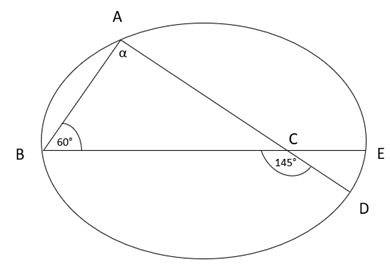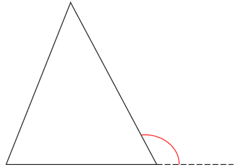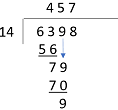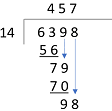The NWEA MAP Kindergarten exam assesses math and reading skills in grades K-2. This computer-adaptive test, given 3 times yearly, adjusts to each child's level. Preparing familiarizes them with the format and questions, ensuring accurate results. High scores can benefit your child's education and future opportunities.
Check out our general Free MAP Practice or access PrepPacks by grade:
NWEA MAP Sample Questions
Math
Help Your Child Prepare for Their MAP Test
Explore our MAP Practice PrepPacks that include
Realistic Simulations
PrepPacks tailored to accurate test scenarios.
Interactive Tests
Practice materials, designed to help students perform their best on their tests!
Premium Quality
Expert-crafted practice tests with accurate questions and explanations
Tackling the MAP 8th Grade math section is about mastering concepts and honing problem-solving tactics. Without the pressure of a time limit, the true test is sustaining focus and precision throughout a sequence of increasingly difficult questions.
Our MAP 8th Grade PrepPack concentrates on building deep mathematical understanding and resilience. The full-length practice test included simulates the adaptive nature of the MAP, training you to maintain attention and apply strategies over an extended period. These practices sharpen your ability to navigate complex problems efficiently and accurately.
In addition to a broad spectrum of practice questions, our PrepPack offers in-depth study guides that focus on core mathematical concepts. These guides teach valuable techniques for approaching complex problems, such as identifying underlying patterns, applying logical reasoning, and more
Our MAP 8th grade preparation contains a full-length Math simulation + 3 sub-topic math quizzes, to make sure you master each question type found in the test.
Language Usage
The MAP 8th Grade language usage section demands more than a basic understanding of grammar and vocabulary; it requires the ability to apply these elements in varied and increasingly sophisticated contexts.
Our PrepPack is tailor-made to address these demands and provides a realistic practice ground to apply grammar and usage rules in context, improving not only your knowledge but also your confidence in handling the section's challenges.
A general yet effective tip for mastering this section is to focus on developing a strong grasp of sentence structure and syntax. Our practice materials are tailored to help you recognize and common errors in sentence construction, such as misplaced modifiers, run-on sentences, and incorrect subject-verb agreement. This foundational skill will enable you to analyze sentences more effectively, leading to more accurate answers on the MAP test.
Our 8th grade MAP preparation offers a detailed Language Usage simulation and 6 video lessons that break down each subtopic ensuring that you have a thorough understanding of each question type.
Reading
Navigating the MAP 8th Grade reading section involves understanding and interpreting text across a spectrum of genres and themes.
A key strategy for performing well in this section is to build your inferential reading skills. Our PrepPack assists you in drawing logical conclusions and understanding deeper meanings beyond the literal text. This skill is crucial, as it allows you to interpret implications, analyze characters' motivations, and discern themes, even when texts become more abstract.
Get fully prepared for the 8th-grade MAP Reading Test with our comprehensive preparation that includes a full-length Math simulation and 6 subject-targeted math quizzes. Our prep materials cover all Reading question types found in the actual test, ensuring you're fully equipped to succeed.
8th Grade MAP Test Scores
The NWEA MAP Growth scoring system is based on the Rasch unIT (RIT) scale. This scale provides a grade-independent score, which demonstrates the student's ability and knowledge on the various subjects the test measures. The RIT scale produces scores that gives an opportunity to monitor students growth from year to year along developmental scales.
Every question on the test has an RIT value that reflects the question and topic's complexity level. The final RIT score given to the student represents the specific complexity level in which he or she is predicted to answer approximately 50% of the questions correctly. In addition to a general RIT score, the students receive a separate RIT score for each section of the MAP test, which enables them to spot their strengths and weaknesses.
Visit TestPrep-Online’s MAP scores page to find more information on 8th Grade MAP Testing scores.
Improve your RIT score:
MAP Math for 8th Grade
The 8th grade MAP math section contains approximately 47-53 questions from various mathematical topics:
- Number Sense: Applying concepts of identification, counting, comparing, and ordering various types of numbers.
- Computation & Problem Solving: Applying properties of computation to solve real-world and mathematical problems involving various number types.
- Algebraic Concepts: Applying algebraic concepts, such as the extension of patterns, simplification of expressions, solving equations and inequalities, identification of points on the coordinate plane, and examination of functions.
- Geometry: Applying geometric concepts, including 2-D and 3-D figures identification and classification, symmetry and transformations, similar and congruent figures, the Pythagorean Theorem, and scale factors.
- Measurement: Using measurement, conversion, appropriate use of units, and calculation of geometric measures such as circumference, area, surface area and volume.
- Statistics & Probability: Application of methods of organizing, reading, and interpreting graphs, collecting, and analyzing data, and determining probability and using it to make predictions regarding possible outcomes.
Map Language Usage for 8th Grade
The 8th Grade MAP language usage section contains approximately 50-53 questions from various grammar and writing level topics:
- Mechanics: Understanding conventions of capitalization, punctuation, and spelling.
- Parts of Speech: Understanding various aspects of speech.
- Usage: Correct Usage of grammar and sentence structure.
- Writing Process: Efficiently use research and writing skills to plan, organize, develop, and revise writing
MAP Reading for 8th Grade
The 8th Grade MAP reading section contains approximately 40-43 questions including both informal text and literature comprehension:
- Word Meaning: Comprehension of words and nuances through context, clues, spot relations between words, and via the recognition of the structures behind them.
- Literary Concepts: Analyzation of literary text - determining primary ideas and themes, recognizing structures, and drawing conclusions.
- Informational Concepts: Examination, reading, and comprehension of informational texts – determining main ideas, making inferences and predictions, and analyzing the development of arguments
Preparing for the 8th Grade MAP Growth Test
Preparing for the 8th Grade MAP Test is crucial to obtaining the highest results possible. Even though the MAP Test is not timed, it can be especially tricky for those who are unfamiliar with the questions. Moreover, as many schools and gifted programs use the MAP scores to determine an applicant's qualification, a high MAP score can have a significant impact on your child's future.
So, how to prepare? TestPrep-Online offers 8th Grade MAP Practice Pack. This pack can upgrade your child performance on the test and help him or her learn to improve his or her skills on any of the test's sections. The pack features different methods of preparation and includes section-specific detailed study guides, graduated difficulty level quizzes, a full-length simulation, and hundreds of practice questions with detailed explanations for all three sections of the 8th Grade MAP test (Language Usage, Reading, and Math).
Free MAP 8th Grade PDF Test Practice
View and download a free TestPrep-Online 8th Grade MAP Sample Test. This is a printable practice test with various questions along with detailed explanations. This would be an excellent starting point for further learning towards the upcoming MAP exam.









